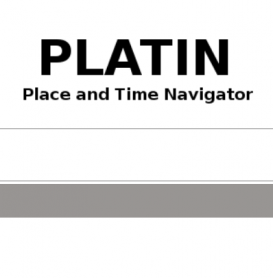How to Use Platin
- Download the CSV file (click for topic, genre, or known female author) for the data you want to visualize from any of the options in the "Analyze" menu above, and save the file to your computer. For example, select "Download books by topic" and then choose "anatomy." Your browser should offer you to save the file "anatomy.csv" (in Safari you may need to select "Save as" and select "page source" as format).
- Open the Platin histogram tool here, or by using the "Open Platin" link in the header box, above.
- Under "Load Data" select "local CSV file" in the select box.
- Click the "Browse" button and select the CSV file you want to use on your computer.
- Click the "Load CSV" button.
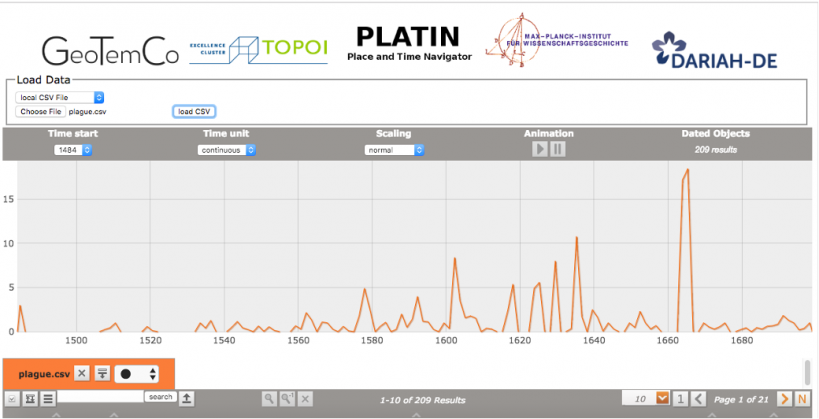
Screenshot of Platin tool.
Additional Tips and Tricks
- If you would like to compare the data with additional datasets you can load more CSV files by repeating the steps 3 to 5 above. The new dataset will show up in the histogram with a new color, and its data table will show up under a new tab in the same color below.
Example
The Platin histogram tool allows us to visualize multiple data sets together. This is particularly useful for comparing trends across different topics and genres. The following examples layer histograms for works by “Known Female Authors,” with the topics of “Midwifery” “Women” and “Reproduction.” By bringing these data sets together, instructors and students alike can think about the connections between gender, authorship, and medicine over time.
To begin, the histograms show the sudden spike in the 1650s of works explicitly authored by women, in subjects we tend to gender as “female.” This in itself can generate many useful discussion questions in class. What about this time period made female authorship more appealing, possible, or acceptable? Why might these values have changed? And who were the authors in earlier years? Were they solely men, or was it possible for women to have written anonymously or under a male pseudonym? For many early modern people, women, by virtue of their embodied experience, had a deeper knowledge of women’s bodies and health than did men, who saw female bodies as something of a threatening mystery. That said, male medical and social authority could outweigh this gendered experience, leading many authors of books on women, reproduction, and midwifery to be men.
Similarly, since there is not a perfect overlay of the histograms for each of these categories, what can these gaps tell us about changing trends in male or female medical authority, or about the potential audiences for these printed works? We can consider whether midwives or female healers may have owned these books. So too did male medical students and practitioners. We also know that some men read printed works on reproduction for their own curiosity or titillation, rather than for medical purposes. Lay women, too, may have purchased handbooks on reproduction or midwifery for similar reasons, but also in order to understand their own bodily functions, or perhaps to aid in the pregnancy and childbirth of a neighbor or family member.
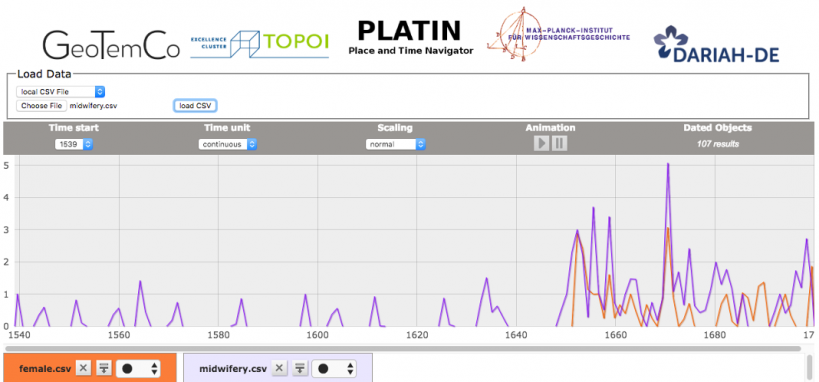
Image 1: Histogram of “Known Female Authors” and “Midwifery”
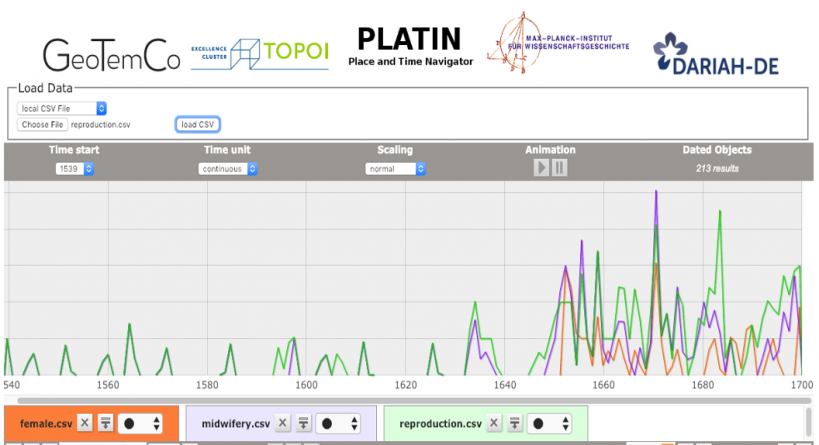
Image 2: Histogram of “Known Female Authors,” Midwifery,” and “Reproduction”
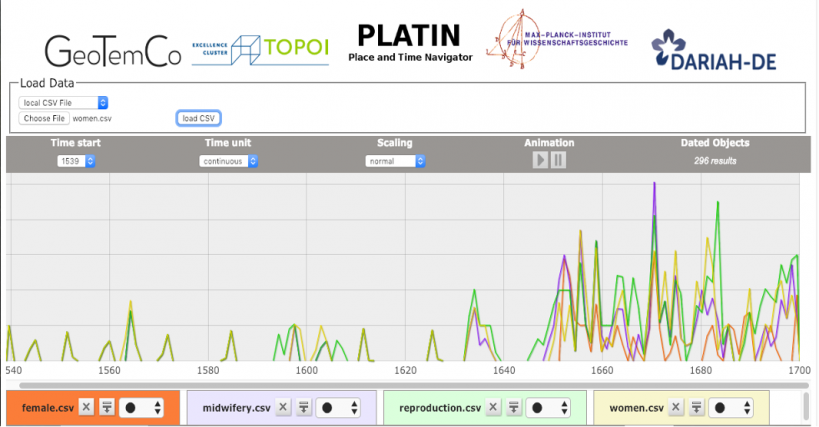
Image 3: Histogram of “Known Female Authors,” “Midwifery,” “Reproduction,” and “Women”
Instructions by Robert Casties and Emily J. Clark. Example by Emily J. Clark.
